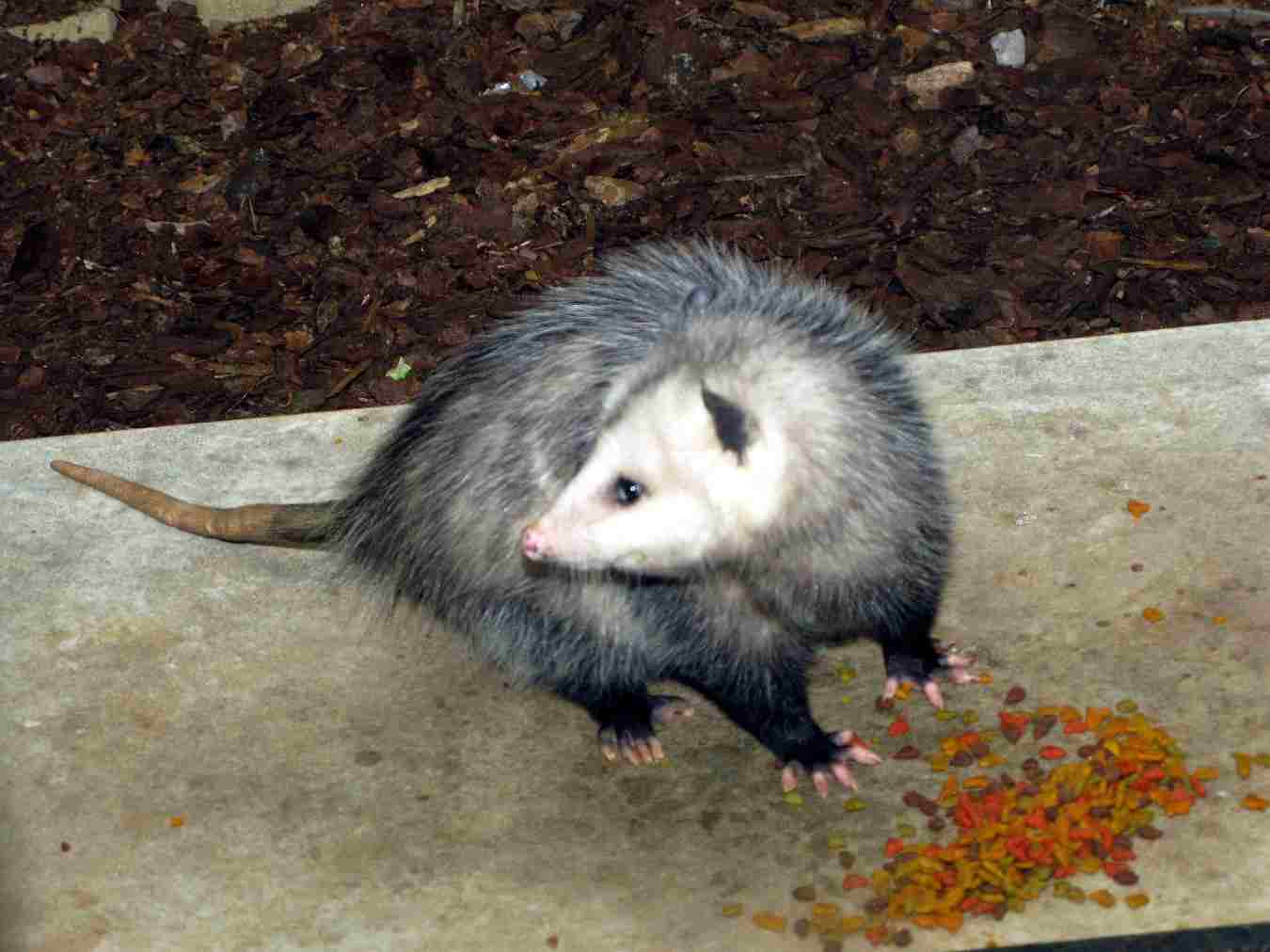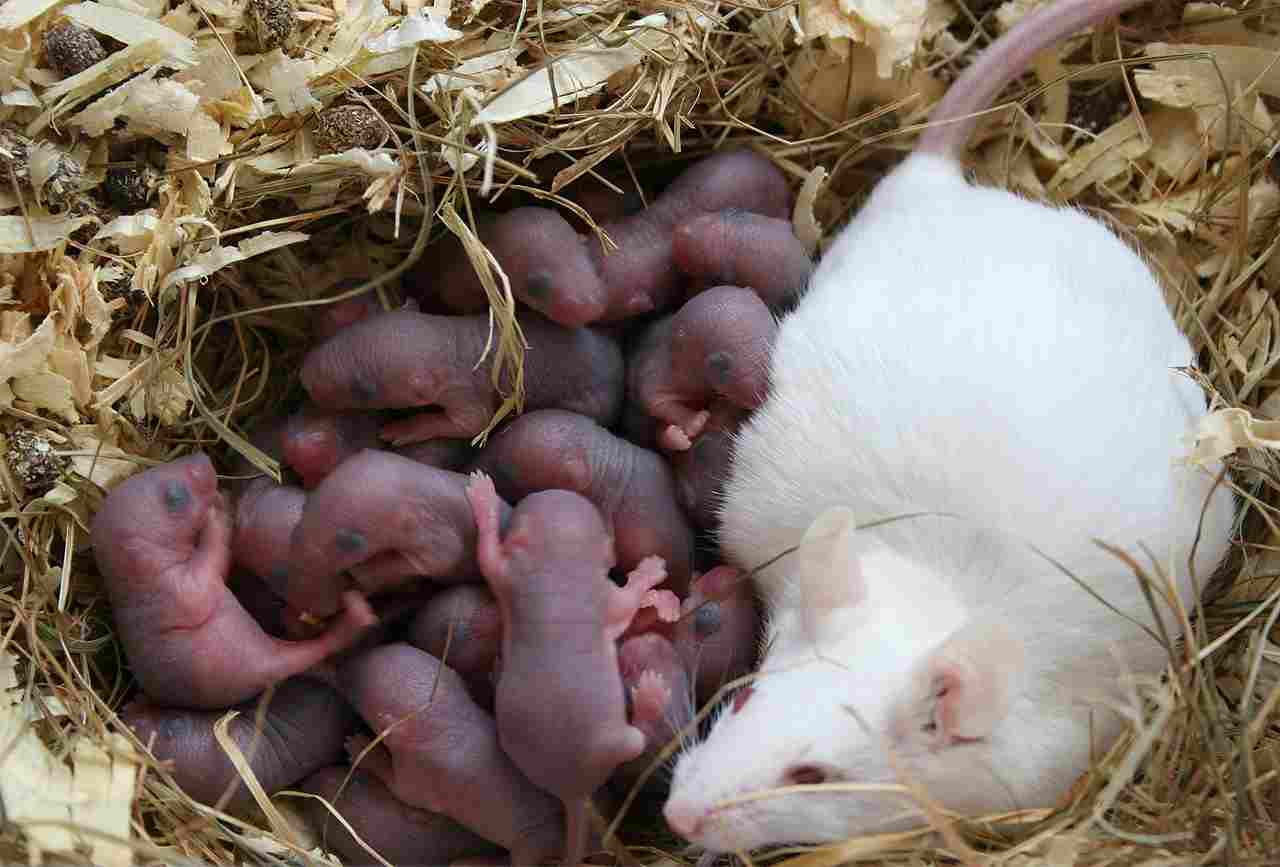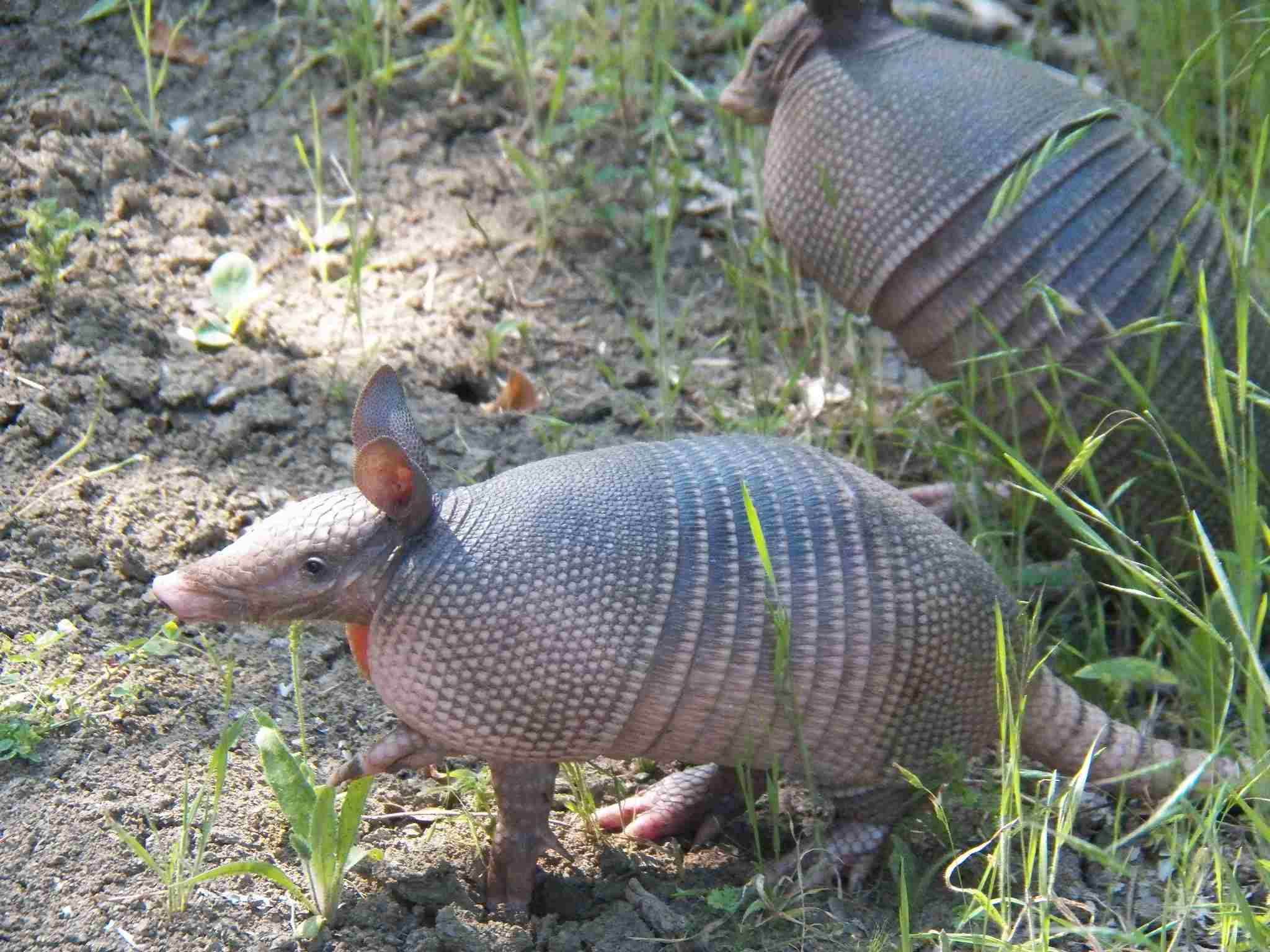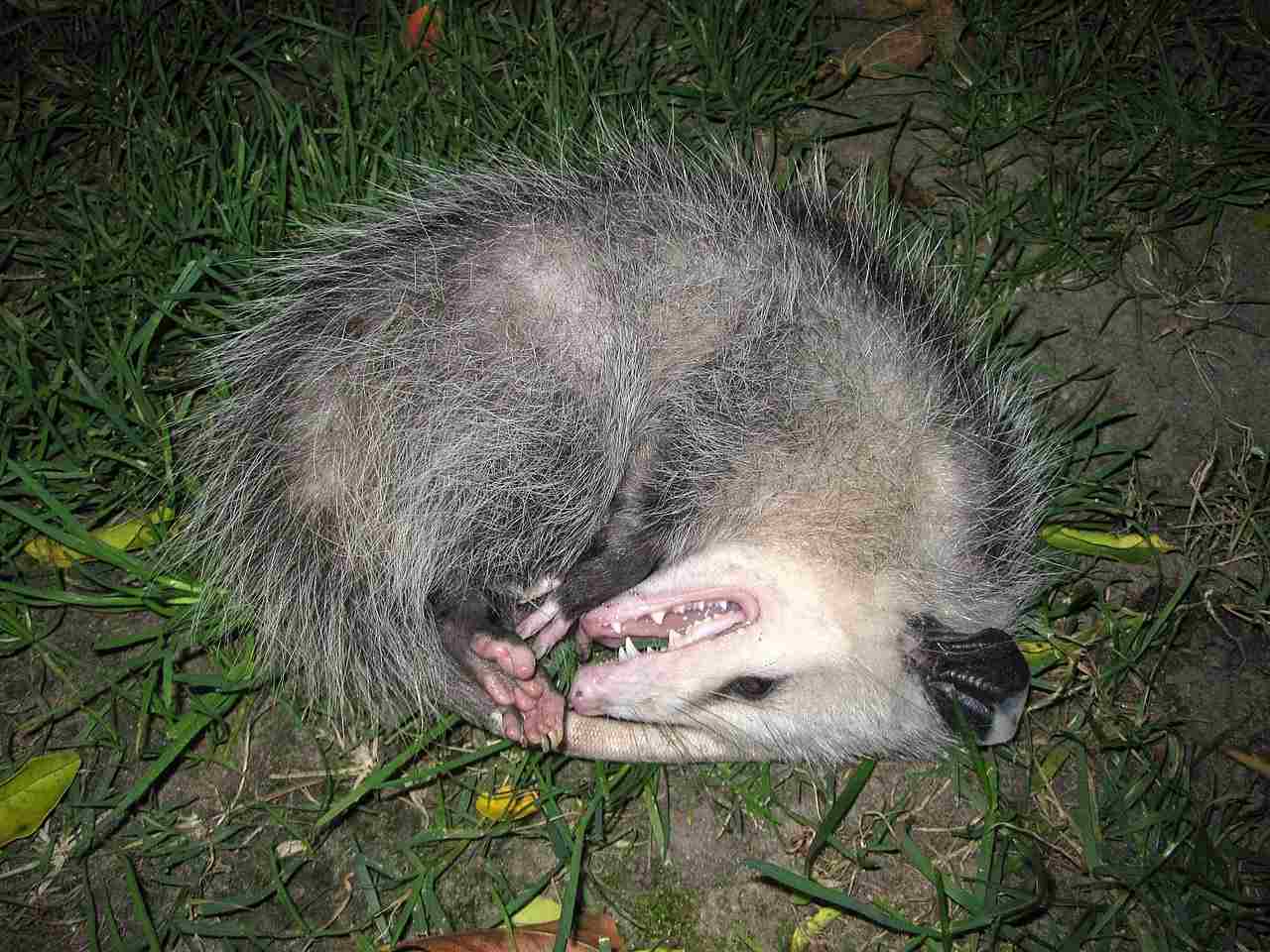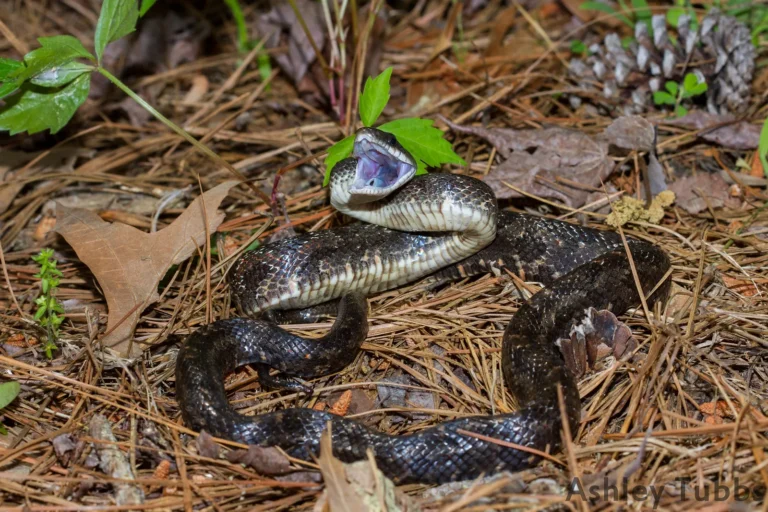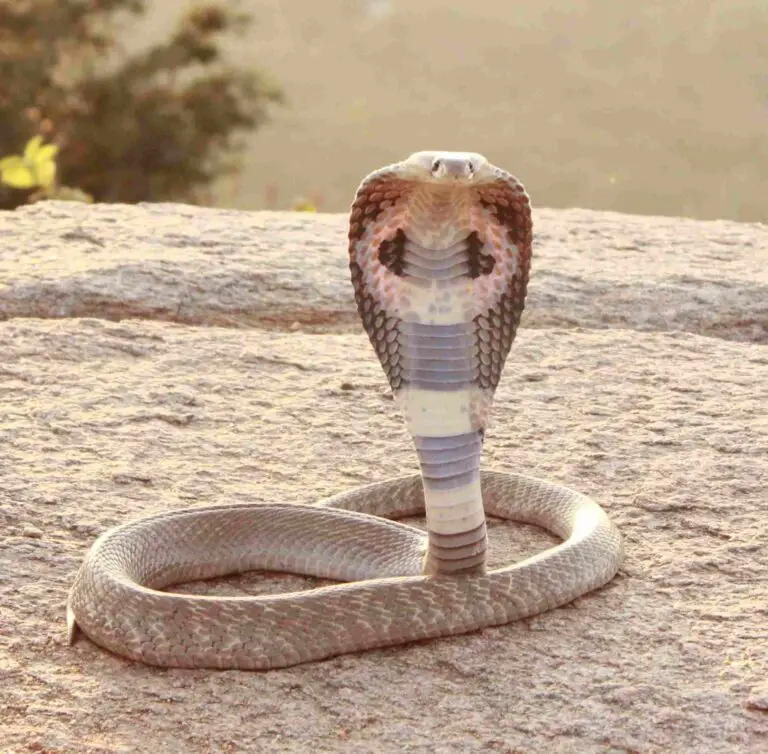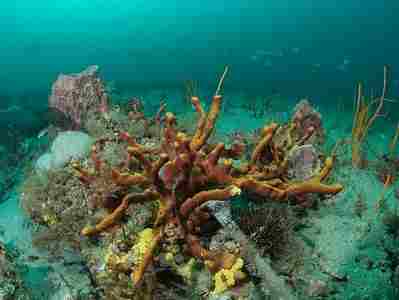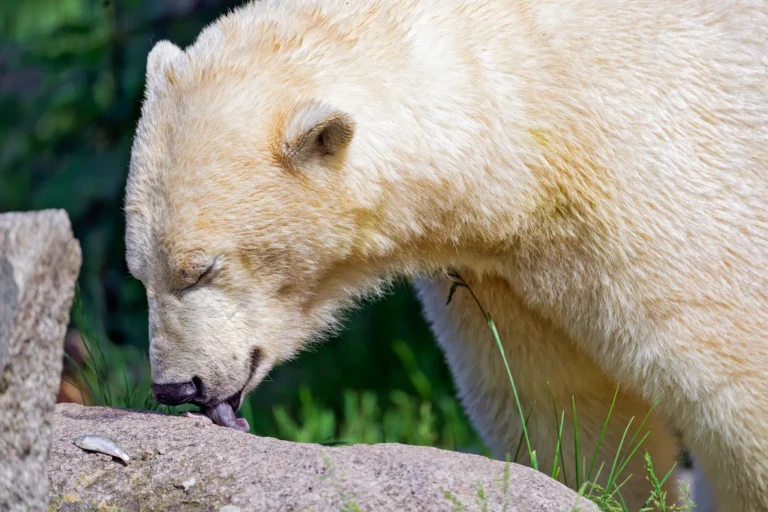Possum Vs Dog Size, Weight, Overall Comparison
Possums and dogs, both sharing the cover of darkness as nocturnal creatures, possess distinct characteristics shaped by their evolutionary paths. While their encounters are generally rare due to the non-confrontational nature of possums, understanding their respective traits provides insights into potential dynamics. In a physical altercation, a dog is likely to emerge as the victor, given its overall advantages in size, strength, and predatory instincts.
Possum Vs Dog: Who Would Win in a Fight
In a physical confrontation between a possum and a dog, the dog is poised to prevail. Dogs, with their inherent traits of being larger, heavier, faster, and more aggressive, equipped with superior instincts and predatory features, hold a distinct advantage over possums.
I. Nocturnal Analogues with Distinct Characteristics:
– Possums and dogs, both nocturnal creatures, possess unique characteristics molded by their evolutionary history.
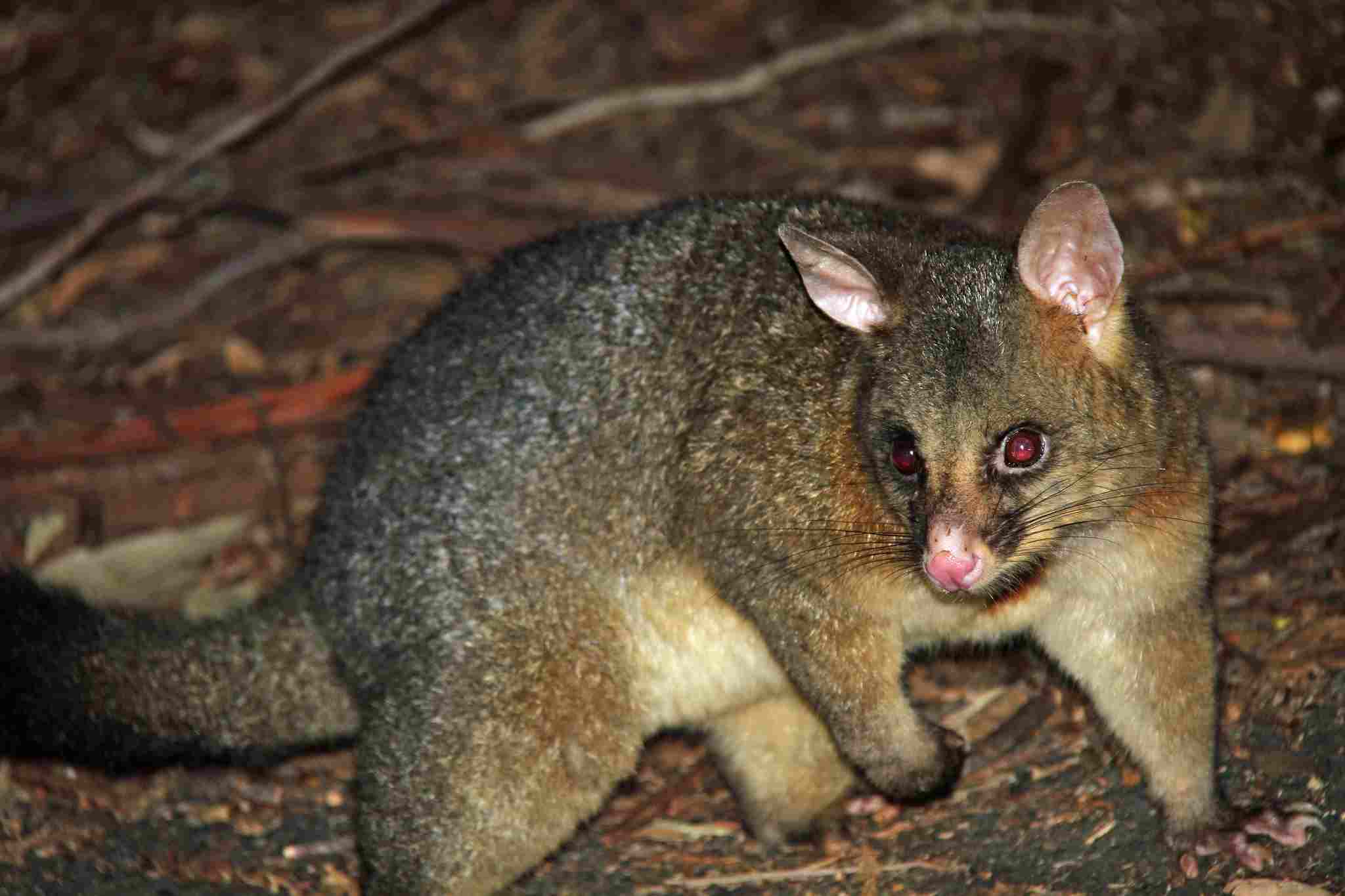
II. Evolutionary Paths and Size Disparities:
– Dogs, having undergone domestication, exhibit notable differences in evolutionary paths compared to marsupial possums. The size, weight, and strength disparities between the two species contribute to the potential outcome in a confrontation.
III. Dog’s Superior Speed and Agility:
– Dogs typically showcase superior speed and agility compared to possums, enhancing their ability to maneuver and engage in physical altercations.
IV. Aggressive Nature and Predatory Features:
– The dog’s inherent aggression, coupled with superior predatory features, provides it with a substantial advantage in a confrontation with a possum.
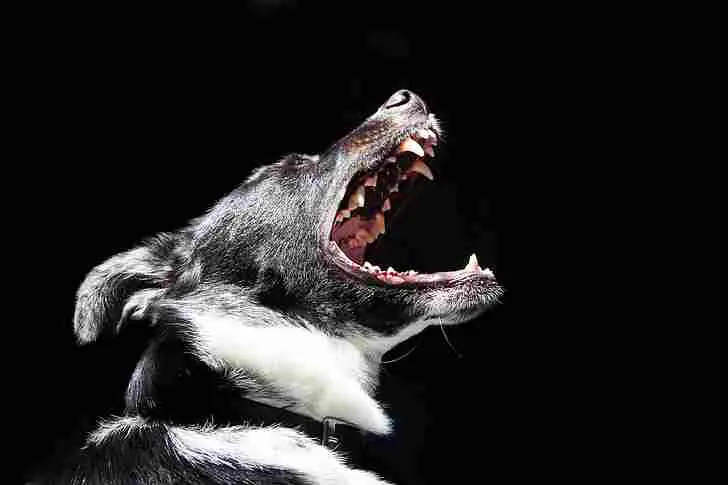
V. Defensive Possum Injuries:
– While a defensive possum, especially small breeds, may cause injuries to a dog, such scenarios are rare due to the possum’s inclination to avoid confrontations and opt for flight rather than fight.
VI. Non-confrontational Nature of Possums:
– Possums, in general, exhibit a non-confrontational nature and prefer fleeing from potential threats, including dogs. This behavior significantly reduces the likelihood of physical altercations.
VII. Rare Defensive Scenarios:
– Defensive interactions where a possum may cause harm to a dog are infrequent, highlighting the possum’s preference for avoiding conflict and resorting to defensive measures only when necessary.
VIII. Understanding Predatory Instincts:
– Dogs, driven by their predatory instincts, are more likely to engage in confrontations, while possums prioritize evading threats, contributing to the overall dynamics between the two species.
IX. Minimizing Encounters:
– Recognizing the differences in behavior and inherent traits between possums and dogs underscores the importance of minimizing encounters. The rarity of confrontations emphasizes the effectiveness of the possum’s avoidance strategies and the inherent dynamics of their coexistence.
*Details of Comparison
| Criteria | Possum | Dog |
| Taxonomy | Order: Diprotodontia |
Order: Carnivora
|
| Family: Phalangeridae | Family: Canidae | |
| Genus: Various | Genus: Canis | |
| Species: Multiple |
Species: Canis lupus familiaris
|
|
| Appearance | Dense fur, bushy tail, pointed snout |
Diverse coat types, varied sizes and shapes based on breeds
|
| Size | Varies by species (e.g., Common Brushtail Possum 32–58 cm) |
Varies widely by breed
|
| Weight | Common Brushtail Possum 1.2–4.5 kg |
Varies by breed, from a few kg to over 90 kg
|
| Bite Force (PSI) | Relatively low, adapted for chewing |
Varies by breed (e.g., German Shepherd around 238 psi)
|
| Physical Offensive Advantages | Limited, relies on agility and climbing |
Varied based on breed, includes biting, chasing, herding
|
| Physical Defensive Advantages | Sharp claws, prehensile tail, nocturnal behavior |
Defensive mechanisms like barking, biting, posturing
|
| Speed | Relatively slow ground movement, excellent climbing |
Varies by breed, some, like Greyhounds, can reach 45 mph
|
| Agility | Highly agile, adapted for climbing |
Varies by breed, herding and working breeds often highly agile
|
| Senses | Enhanced night vision, acute sense of smell, good hearing |
Varied senses across breeds, generally strong sense of smell, good hearing
|
| Overall Physical Capacity | Tailored for climbing, moderate ground mobility |
Diverse physical capacities influenced by breed characteristics
|
| Habitat Preference(s) | Arboreal habitats, urban areas with trees |
Adaptable to diverse environments, from urban to rural settings
|
| Tracks | Distinctive footprints with elongated fingers and toes |
Paw prints vary by breed, generally displaying claw marks
|
| Lifespan | 6–15 years in the wild |
10–15 years on average, varies by breed
|
| Mode of Feeding | Primarily herbivorous, consumes leaves, fruits, insects |
Omnivorous, varied diets depending on breed and care
|
| Intelligence | Moderate problem-solving skills |
Varies widely by breed, generally intelligent
|
| Social Behavior | Mostly solitary, territorial behaviors |
Highly social, forms strong bonds with humans and other dogs
|
| Mode of Reproduction | Marsupial reproduction with a short gestation |
Mammalian reproduction with longer gestation
|
| Parental Behavior | Maternal care with pouch, limited paternal involvement |
Varied parental care based on domestication
|
| Proximity to Human-Inhabited Areas | Often found in urban areas |
Closely associated with human habitats
|
| Behavior Toward Humans | Generally cautious, defensive if threatened |
Behavior varies, influenced by training and socialization
|
| Danger Posed to Humans | Minimal danger, may scratch or bite if cornered |
Potential danger, depends on factors like aggression and temperament
|
| Associated Precautions | Caution advised to avoid direct contact |
Responsible ownership practices reduce risks of harm
|
| Conservation Status | Varies among species, some face threats |
Not assessed as domesticated, wild relatives may have conservation concerns
|
Key Points
- Possums are marsupials, while dogs are domesticated mammals.
- Dogs exhibit a broader range of sizes, appearances, and behaviors due to selective breeding.
- Both species show adaptive behaviors based on their environments.
- Human activities significantly influence the ecological roles of both possums and dogs.
- Possums’ ecological implications primarily involve their role in local ecosystems; dogs have complex interactions with human societies and the natural environment.
1. Taxonomy
Possum:
Order: Diprotodontia
Family: Phalangeridae (Australasian marsupials)
Genus: Various (e.g., Trichosurus, Phalanger)
Species: Multiple species, e.g., Common Brushtail Possum (Trichosurus vulpecula)
Dog:
Order: Carnivora
Family: Canidae (Dogs, foxes, wolves)
Genus: Canis
Species: Canis lupus familiaris (Domestic dog)
2. Appearance
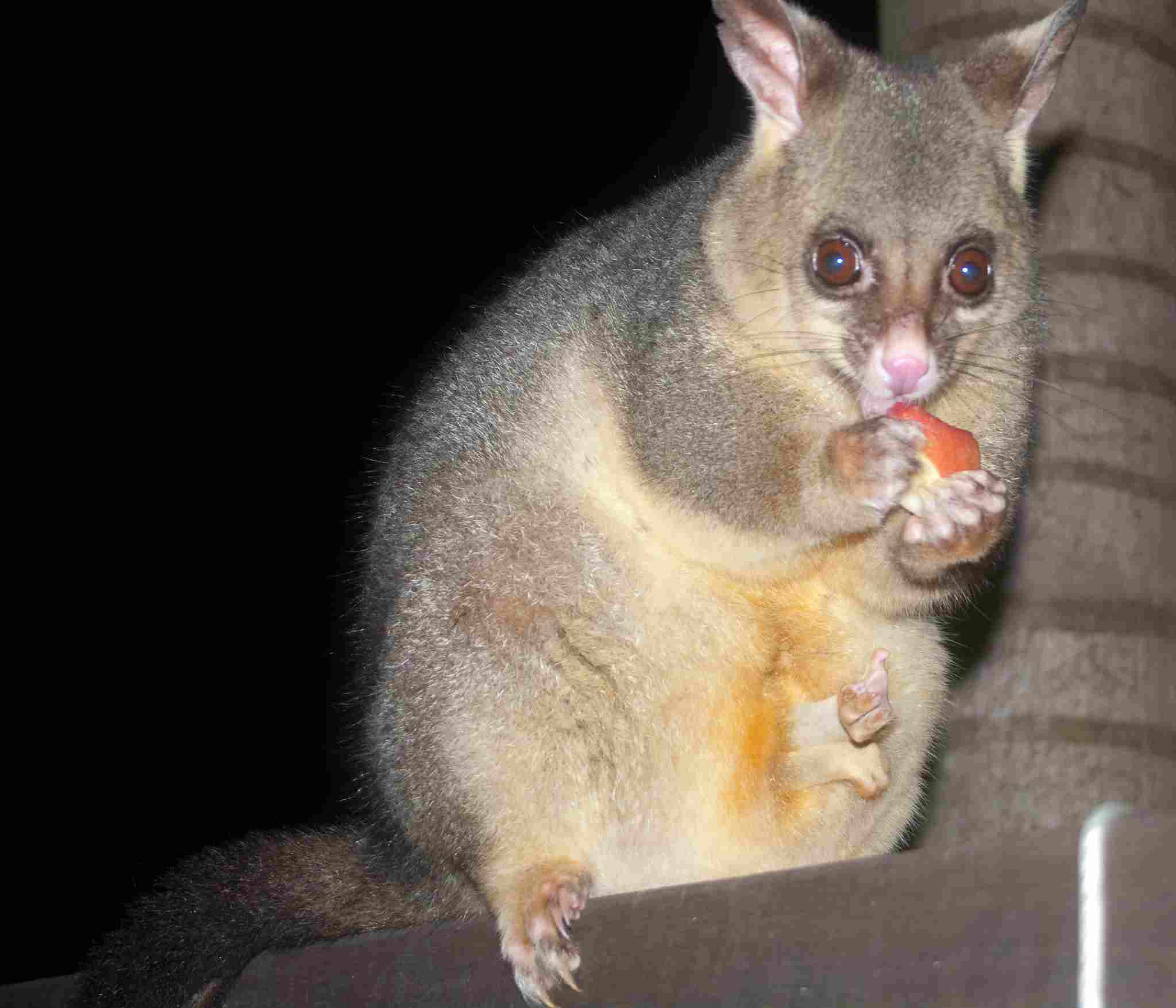
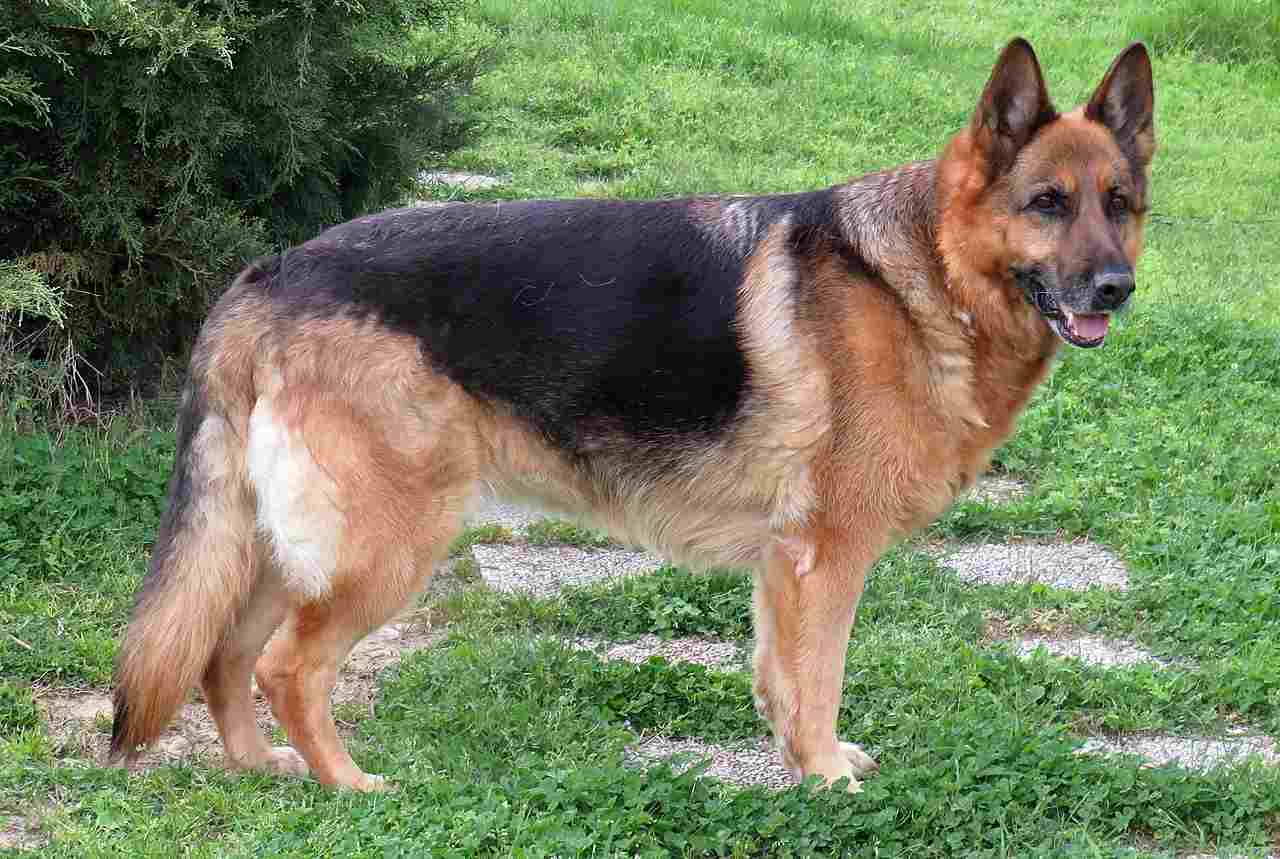
Possum:
Fur: Typically dense, bushy tail, pointed snout, and large eyes adapted for nocturnal vision.
Colors: Range from gray to brown, with variations depending on the species.
Ecological Implications: Camouflaged fur aids in hiding from predators, while nocturnal adaptation supports night-time activities such as foraging.
Dog:
Fur: Diverse coat types (short, long, curly) and colors (varies by breed).
Body Structure: Varied sizes and shapes based on breed characteristics.
Ecological Implications: Domestication has led to a range of appearances tailored to specific roles (e.g., hunting, herding) and preferences, impacting interactions with humans.
3. Size
Possum:
Varied sizes across species, with common brushtail possums being around 32–58 cm (13–23 in) excluding the tail.
Ecological Implications: Size influences the possum’s role in the ecosystem, affecting its dietary needs and potential predators.
Dog:
Sizes vary widely, from tiny breeds like Chihuahuas to large breeds like Great Danes, with heights ranging from a few inches to over 2 feet.
Ecological Implications: Human-driven selective breeding has resulted in a broad size spectrum, impacting dogs’ adaptability and roles in different environments.
4. Weight
Possum:
Common brushtail possums weigh between 1.2 to 4.5 kg (2.6 to 9.9 lb).
Ecological Implications: Weight influences energy requirements, foraging habits, and susceptibility to predation.
Dog:
Weights vary significantly; for example, a Chihuahua may weigh around 1-3 kg, while a Saint Bernard can weigh over 90 kg.
Ecological Implications: Weight impacts mobility, dietary needs, and the dog’s role in activities such as hunting or guarding.
5. Bite Force (PSI)
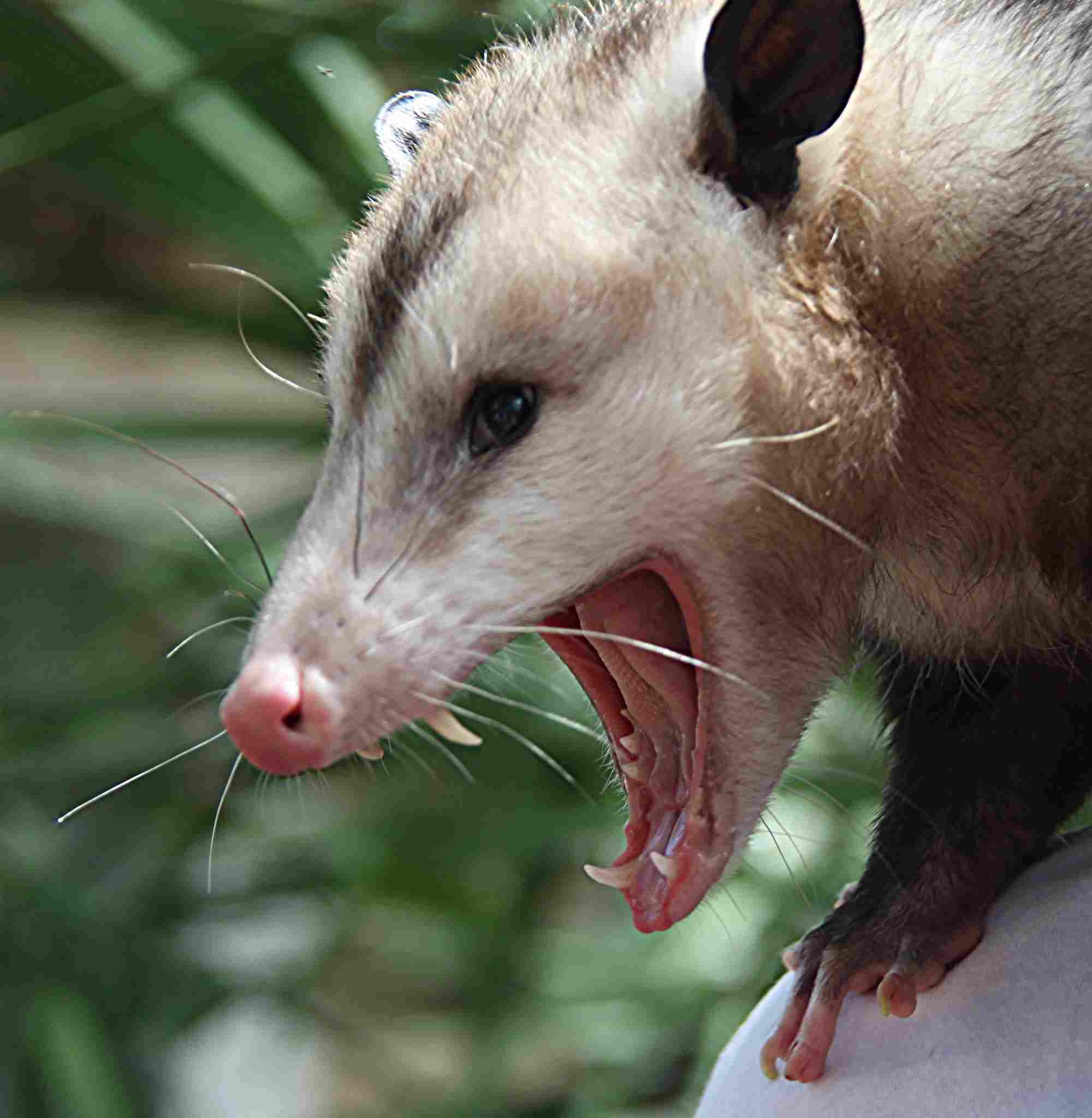
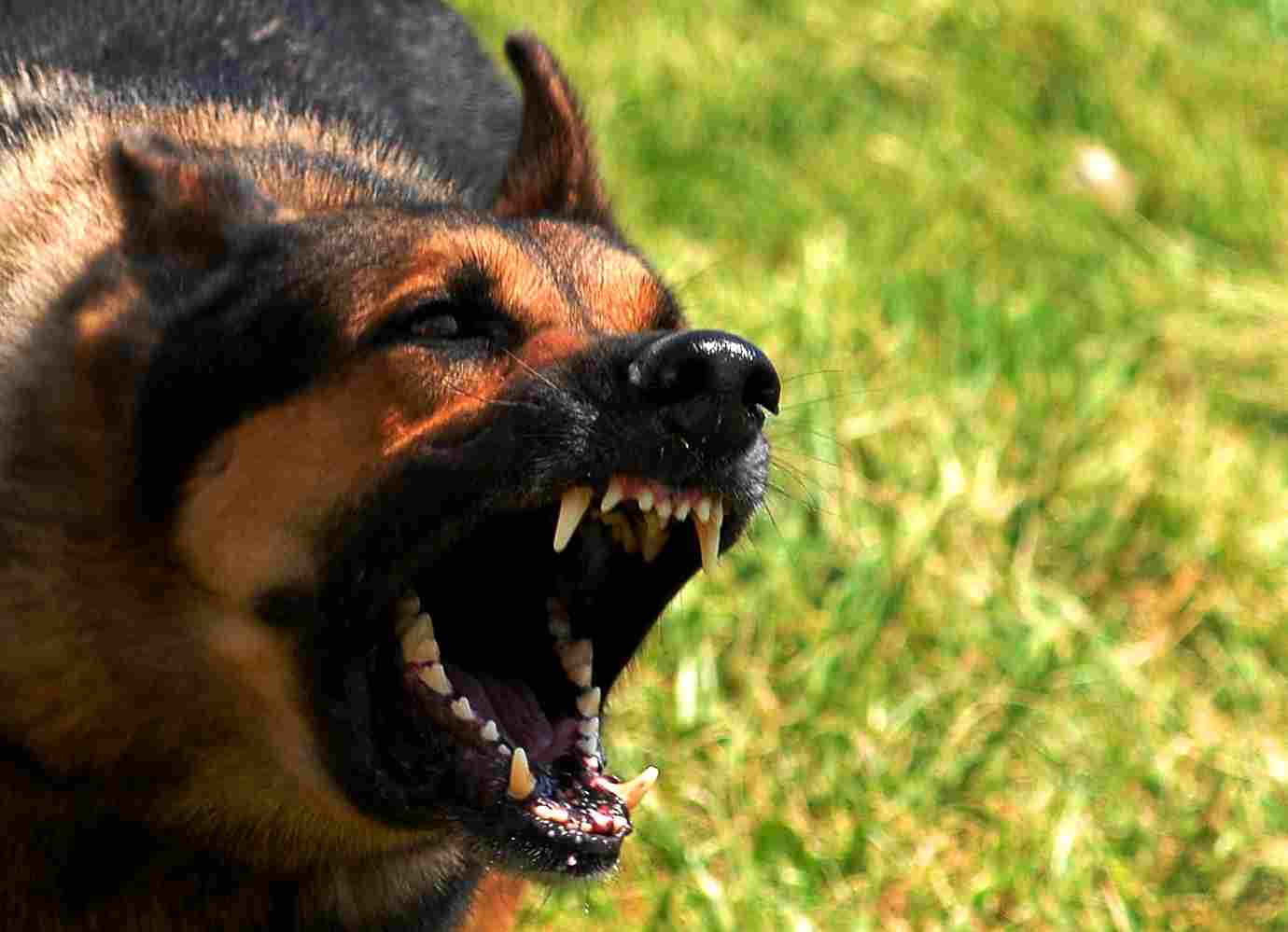
Possum:
Possums have a relatively low bite force, adapted for chewing on fruits, leaves, and insects.
Ecological Implications: Limited bite force influences their feeding behavior and niche in the ecosystem.
Dog:
Bite force varies among breeds; for example, the average bite force for a German Shepherd is around 238 psi.
Ecological Implications: Bite force is linked to hunting, self-defense, and interactions with other species, affecting the dog’s ecological impact.
6. Physical Offensive Advantages
Possum:
Limited offensive capabilities, relying on agility and climbing skills for evasion.
Ecological Implications: Defensive strategies involve avoiding confrontation, contributing to their role as prey in the ecosystem.
Dog:
Varied offensive capabilities based on breed, including biting, chasing, or herding.
Ecological Implications: Dogs’ offensive abilities can impact local wildlife and ecosystems, especially in the case of hunting breeds.
7. Physical Defensive Advantages
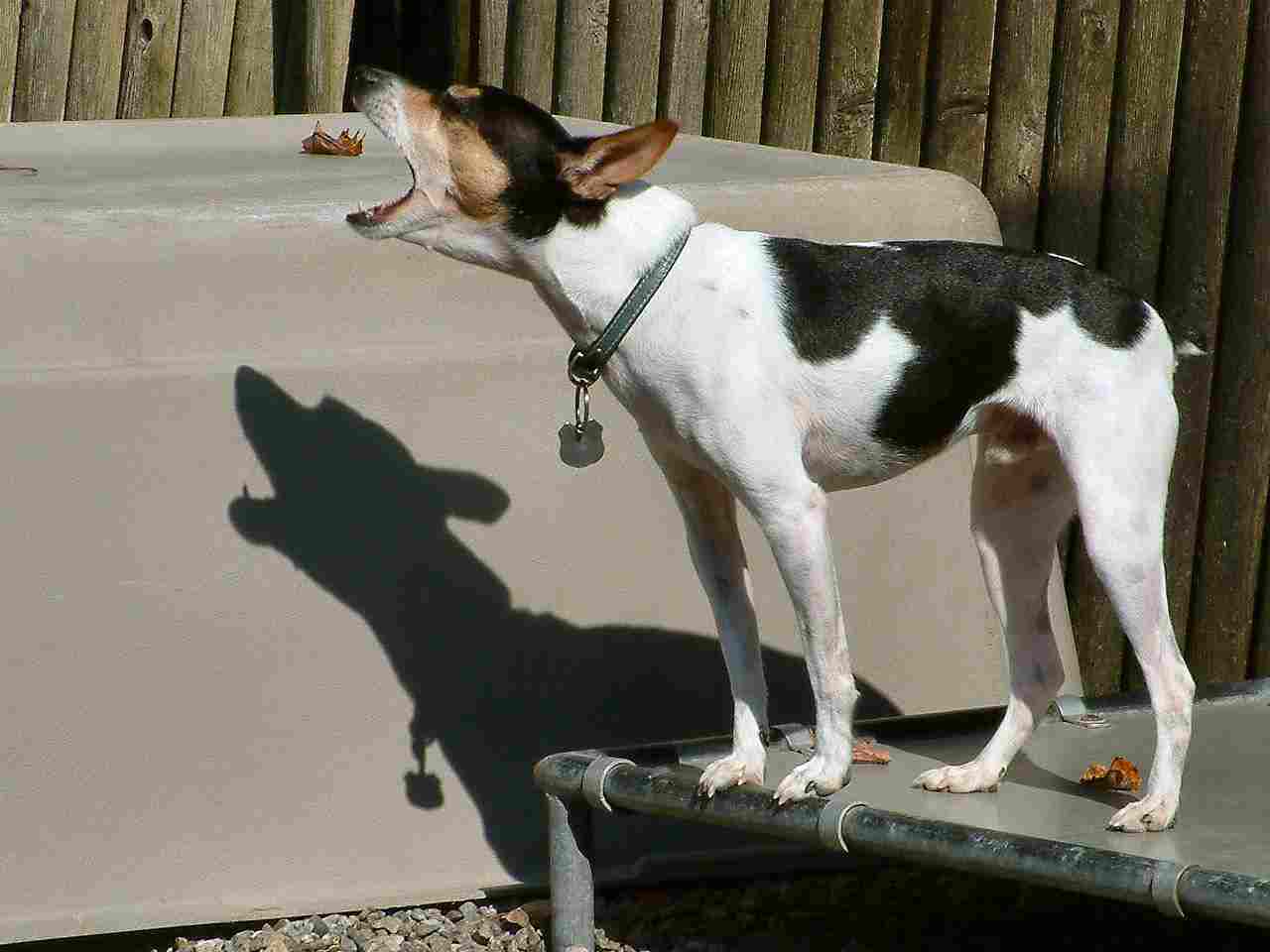
Possum:
Sharp claws, prehensile tail, and nocturnal behavior contribute to avoiding predators.
Ecological Implications: Defense mechanisms help possums survive in diverse habitats with potential threats.
Dog:
Defensive mechanisms include barking, biting, and posturing; some breeds exhibit protective instincts.
Ecological Implications: Domestic dogs’ defensive behaviors may influence interactions with other species, impacting local fauna.
8. Speed (Km/hour or Mile/hour)
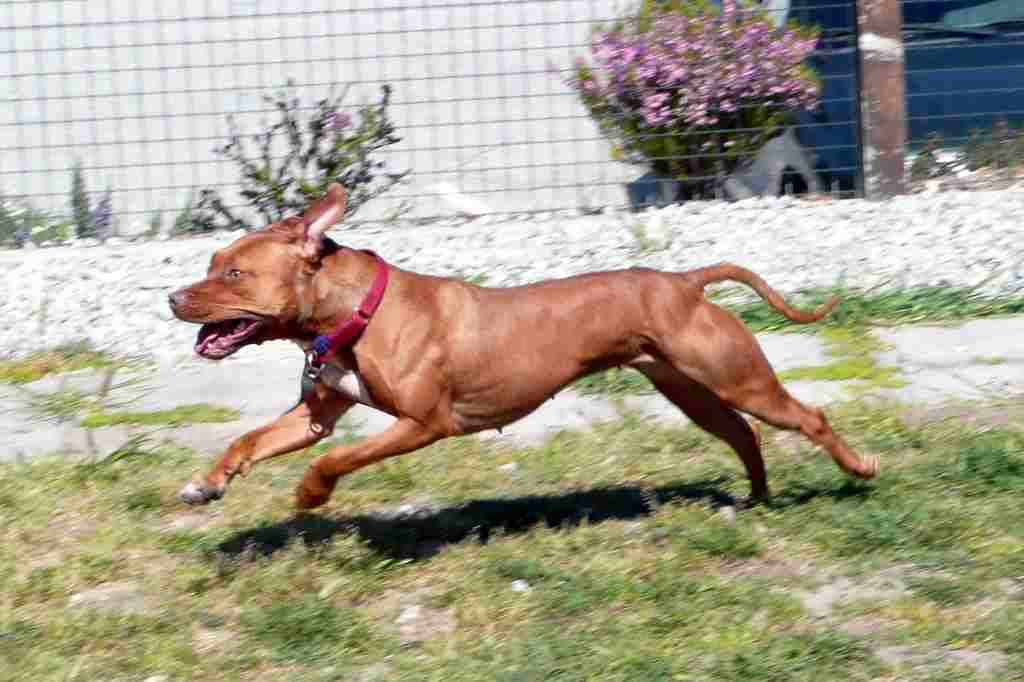
Possum:
Relatively slow ground movement, but excellent climbers with agility.
Ecological Implications: Climbing abilities enhance escape from ground predators, influencing habitat choice.
Dog:
Speed varies by breed, with sighthounds like Greyhounds reaching speeds of 45 mph.
Ecological Implications: Speed influences hunting success and predator-prey dynamics, affecting local ecosystems.
9. Agility
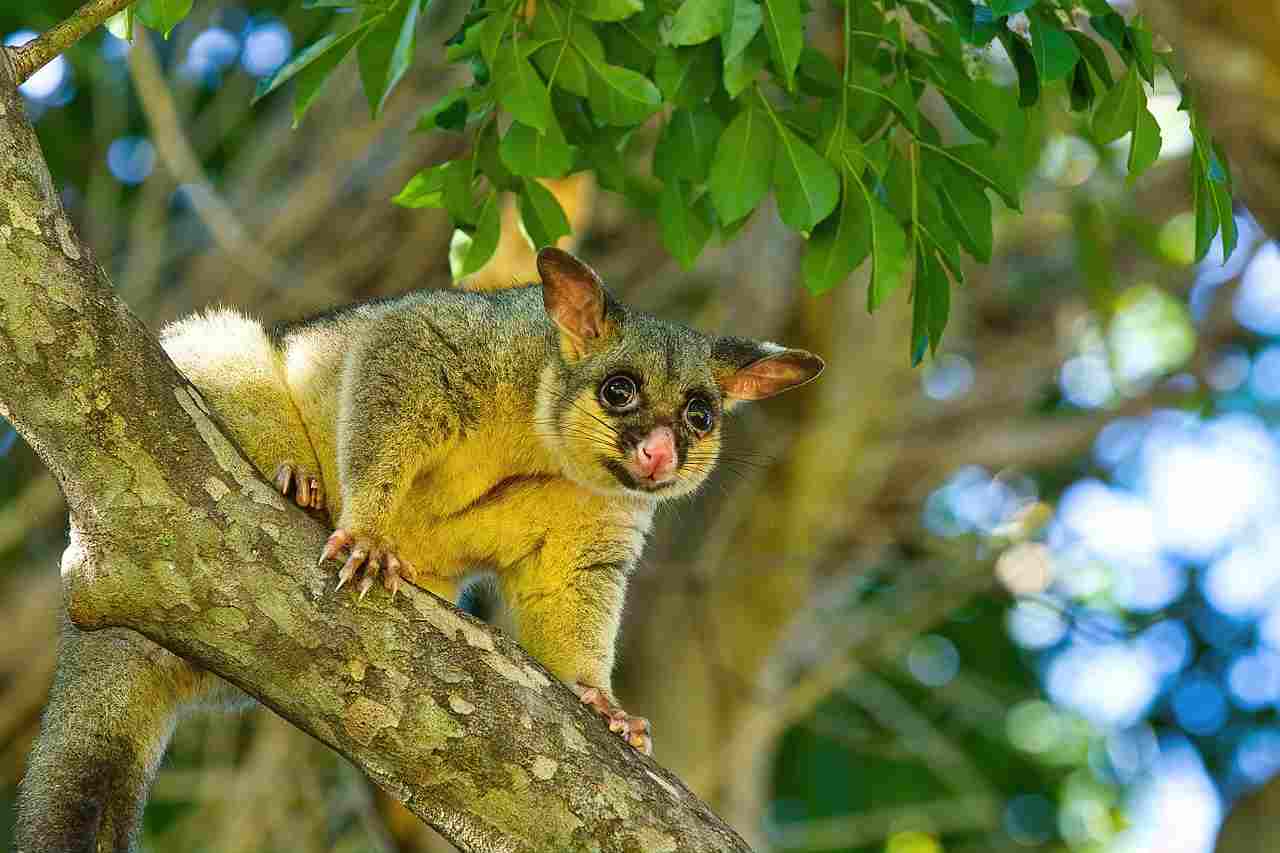
Possum:
Highly agile, adapted for navigating trees and evading ground predators.
Ecological Implications: Agility aids in foraging, escaping threats, and navigating complex environments.
Dog:
Agility varies among breeds; herding and working breeds often exhibit high agility.
Ecological Implications: Agility impacts dogs’ roles in different activities, such as herding or search and rescue, influencing their ecological footprint.
10. Senses
Possum:
Enhanced night vision, acute sense of smell, and good hearing.
Ecological Implications: Nocturnal adaptations and heightened senses contribute to efficient foraging and predator detection.
Dog:
Varied senses across breeds; generally, dogs have a strong sense of smell, good hearing, and some night vision.
Ecological Implications: Dogs’ sensory abilities impact their roles in activities like tracking, hunting, and guarding.
11. Overall Physical Capacity
Possum:
Tailored for climbing, moderate ground mobility, and adapted for nocturnal activities.
Ecological Implications: Physical capacity influences possums’ ecological niche and survival strategies in their habitats.
Dog:
Diverse physical capacities influenced by breed characteristics; includes running, swimming, and specialized skills.
Ecological Implications: Dogs’ physical abilities shape their roles in human-centric activities and interactions with other species.
12. Habitat Preference(s)
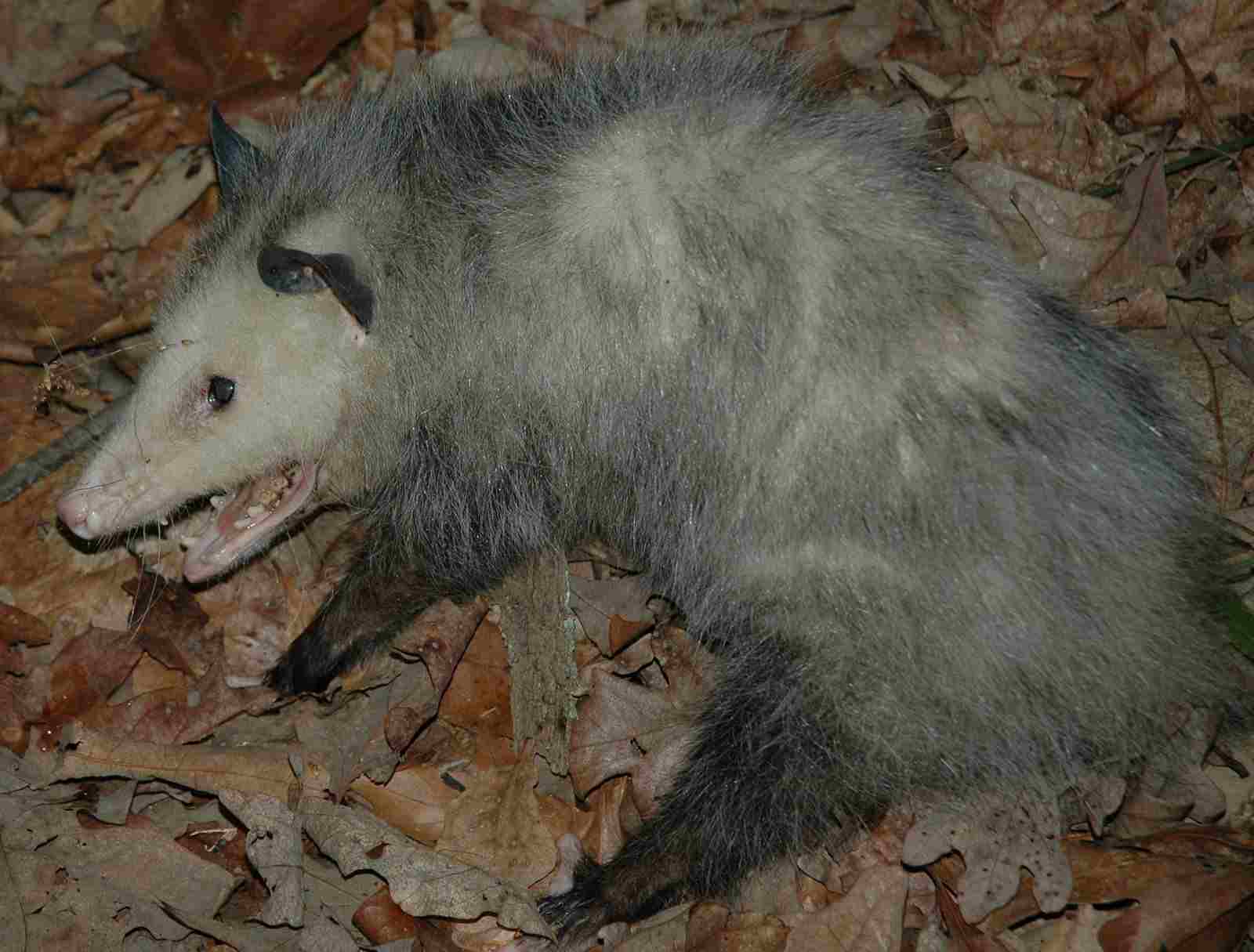
Possum:
Arboreal habitats, including forests and urban areas with trees suitable for climbing.
Ecological Implications: Possums’ habitat preference affects their diet, behavior, and interactions with other species.
Dog:
Varied based on domestication; adaptable to diverse environments, from urban to rural settings.
Ecological Implications: Dogs’ habitat adaptability impacts their interactions with local wildlife and ecosystems.
13. Tracks
Possum:
Distinctive footprints with elongated fingers and toes; tail marks may be present in soft soil.
Ecological Implications: Tracking possums aids in monitoring their presence in different habitats.
Dog:
Paw prints vary by breed, generally displaying claw marks; size differs significantly.
Ecological Implications: Identifying dog tracks is crucial for understanding their movement patterns and potential impact on local fauna.
14. Lifespan
Possum:
Typically 6 to 15 years in the wild, influenced by factors like predation and environmental conditions.
Ecological Implications: Lifespan impacts population dynamics and ecological roles within their habitat.
Dog:
Lifespan varies by breed; generally 10 to 15 years, but smaller breeds may live longer, while larger breeds may have shorter lifespans.
Ecological Implications: Dogs’ lifespan influences their presence and impact on human societies and local ecosystems.
15. Mode of Feeding
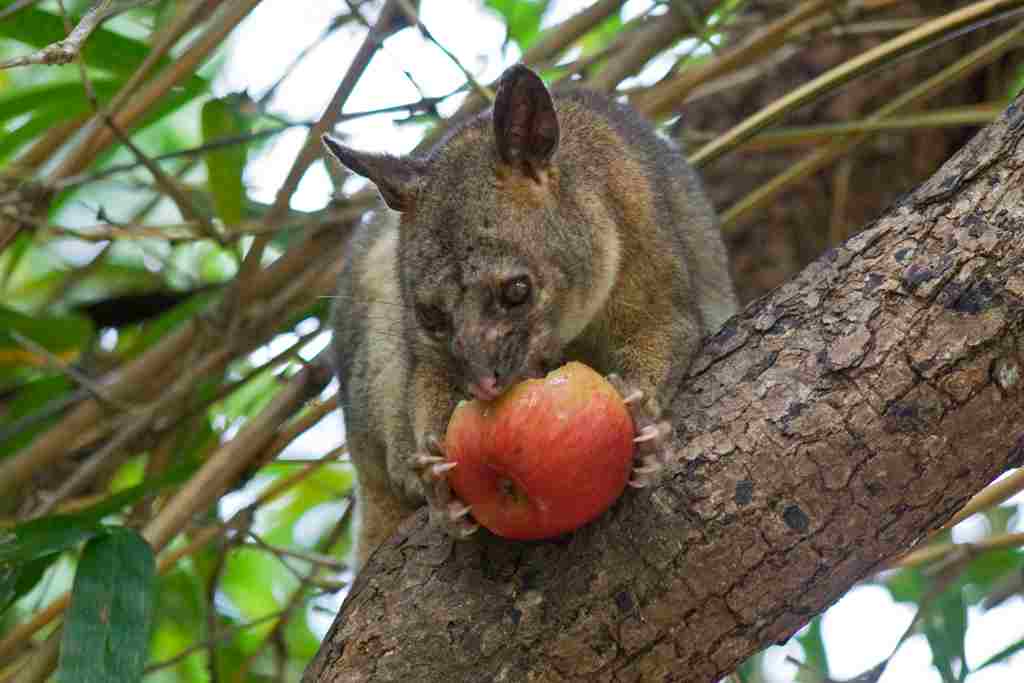
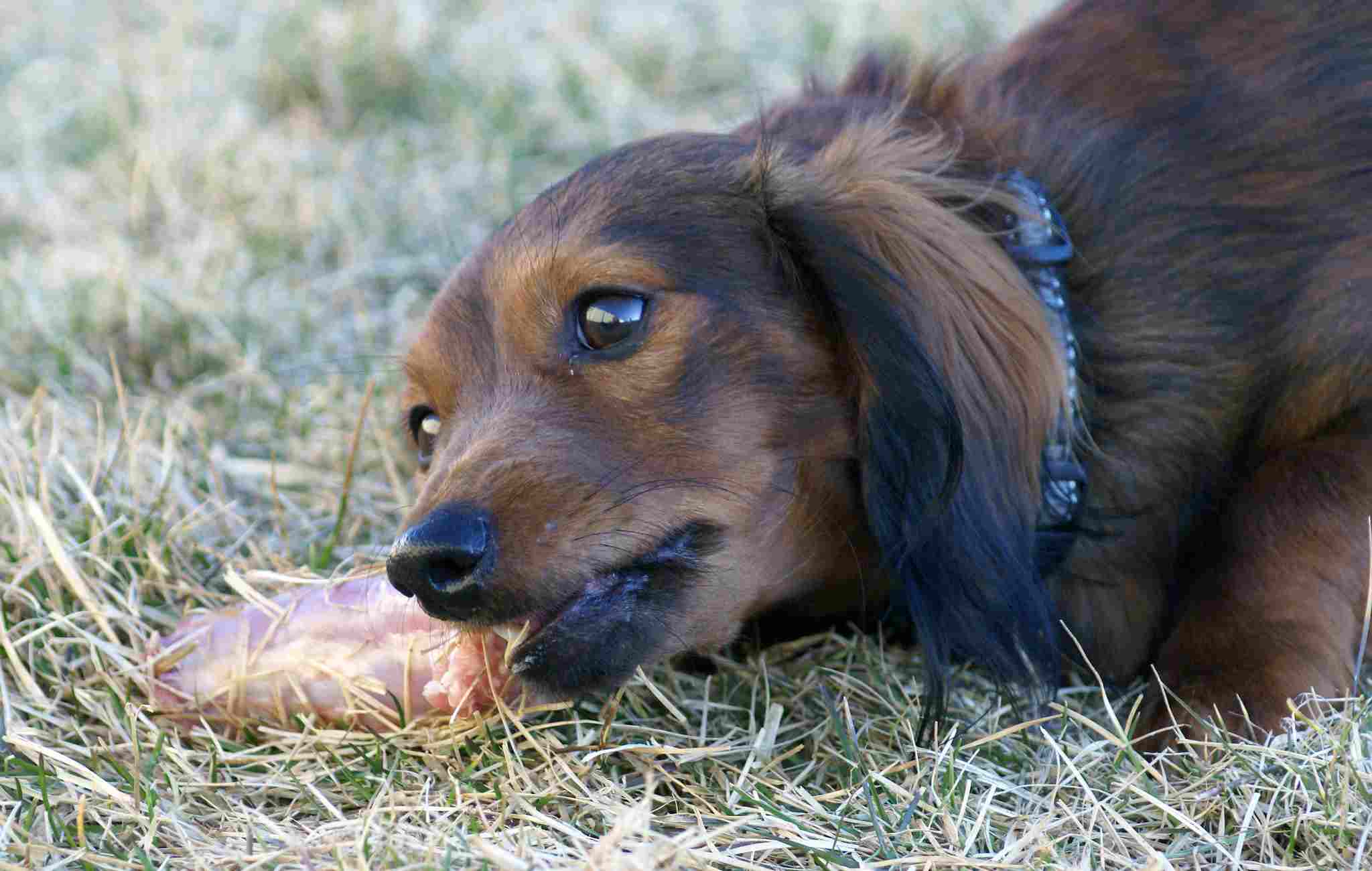
Possum:
Primarily herbivorous, consuming leaves, fruits, insects, and nectar.
Ecological Implications: Possums’ feeding habits affect vegetation and insect populations in their habitats.
Dog:
Omnivorous, with varied diets depending on breed and human care; may include commercial dog food, raw diets, or a mix.
Ecological Implications: Dogs’ feeding habits can influence local wildlife and ecosystems, especially if they hunt or scavenge.
16. Intelligence
Possum:
Moderate intelligence, displaying problem-solving skills in acquiring food and navigating their environment.
Ecological Implications: Cognitive abilities impact possums’ adaptability and survival in changing environments.
Dog:
Varies widely by breed; dogs demonstrate problem-solving, learning, and social intelligence.
Ecological Implications: Intelligent breeds may excel in roles like herding or assisting humans, influencing their ecological impact.
17. Social Behavior
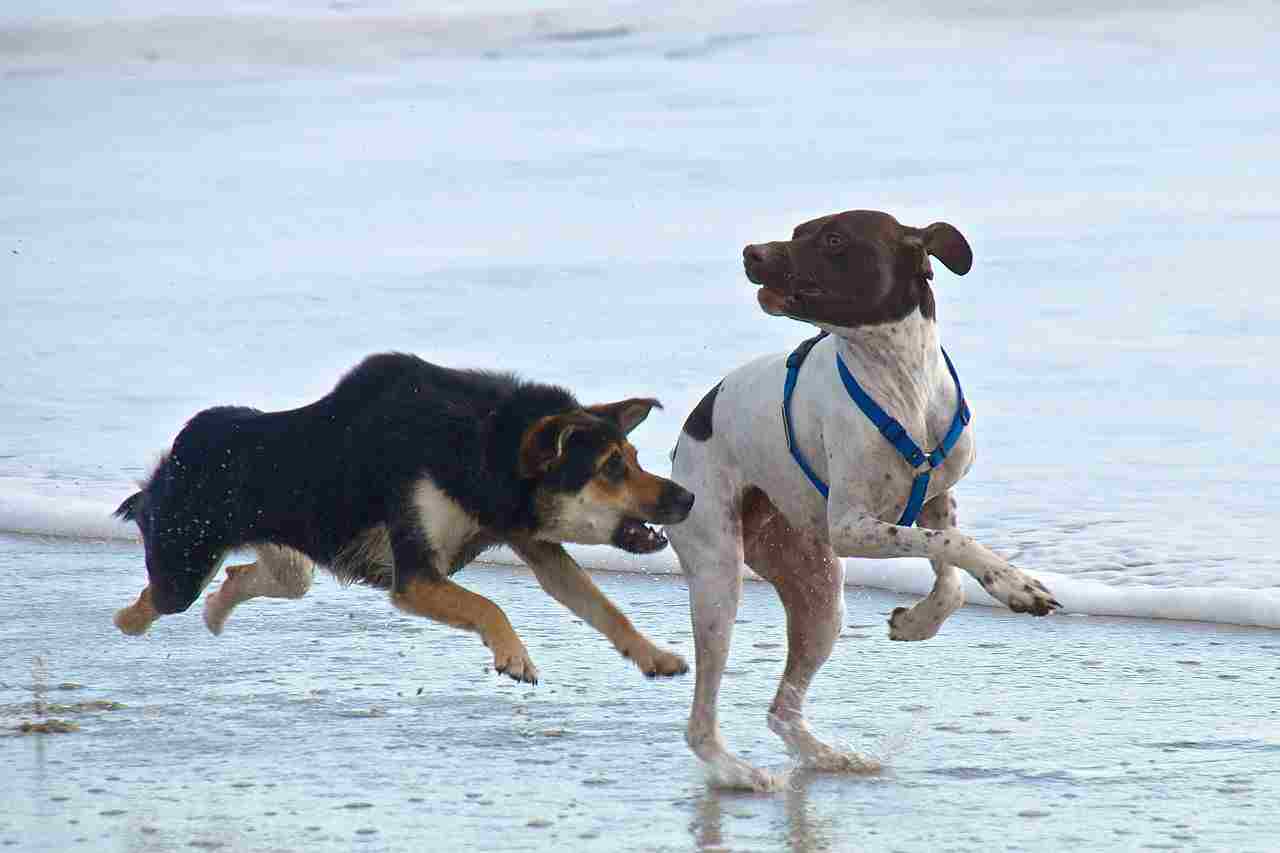
Possum:
Mostly solitary, with territorial behaviors; may form loose family groups.
Ecological Implications: Solitary behavior impacts possum population dynamics and resource utilization in their habitat.
Dog:
Highly social, often forming strong bonds with humans and other dogs; pack behavior in wild relatives like wolves.
Ecological Implications: Social behavior influences dogs’ roles in human societies and interactions with other species in the environment.
18. Mode of Reproduction
Possum:
Marsupial reproduction with a short gestation period; young continue development in a pouch.
Ecological Implications: Reproductive strategy influences population dynamics and the possums’ role in maintaining ecological balance.
Dog:
Mammalian reproduction with longer gestation; puppies are born relatively more developed.
Ecological Implications: Domestication and breeding practices impact dog populations, influencing interactions with local ecosystems.
19. Parental Behavior
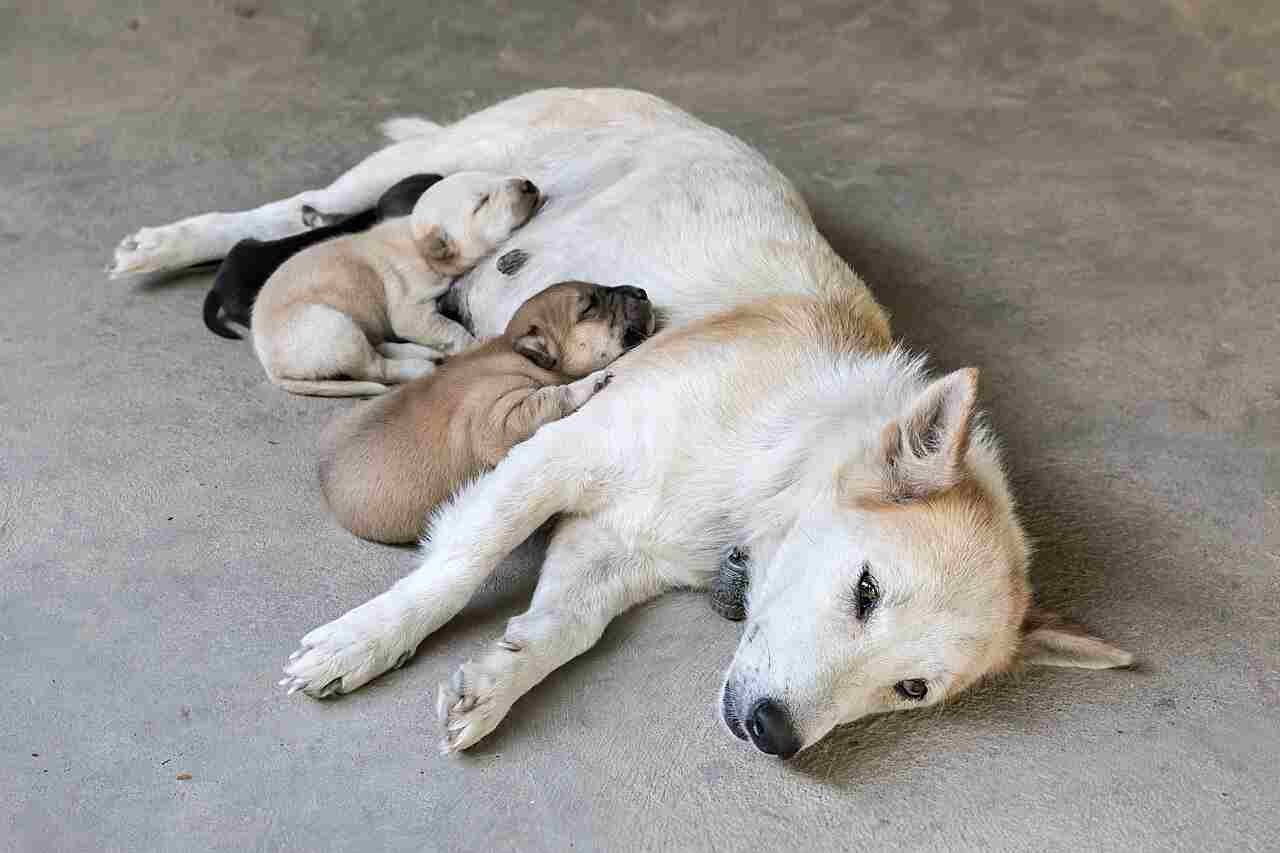
Possum:
Maternal care involves carrying and nursing young in the pouch; limited paternal involvement.
Ecological Implications: Parental behavior influences possum survival rates and population stability.
Dog:
Varied parental care; domestic dogs may receive care from owners, while wild counterparts exhibit pack-based parenting.
Ecological Implications: Parental behavior affects dog population dynamics and interactions with human communities.
20. Proximity to Human-Inhabited Areas
Possum:
Often found in urban areas, utilizing trees and structures for shelter.
Ecological Implications: Proximity to humans can lead to resource competition and potential conflict, impacting both possums and humans.
Dog:
Domesticated dogs are closely associated with human habitats, serving various roles.
Ecological Implications: Dogs’ presence in human-inhabited areas influences local ecosystems, wildlife, and human-dog interactions.
21. Behavior Toward Humans
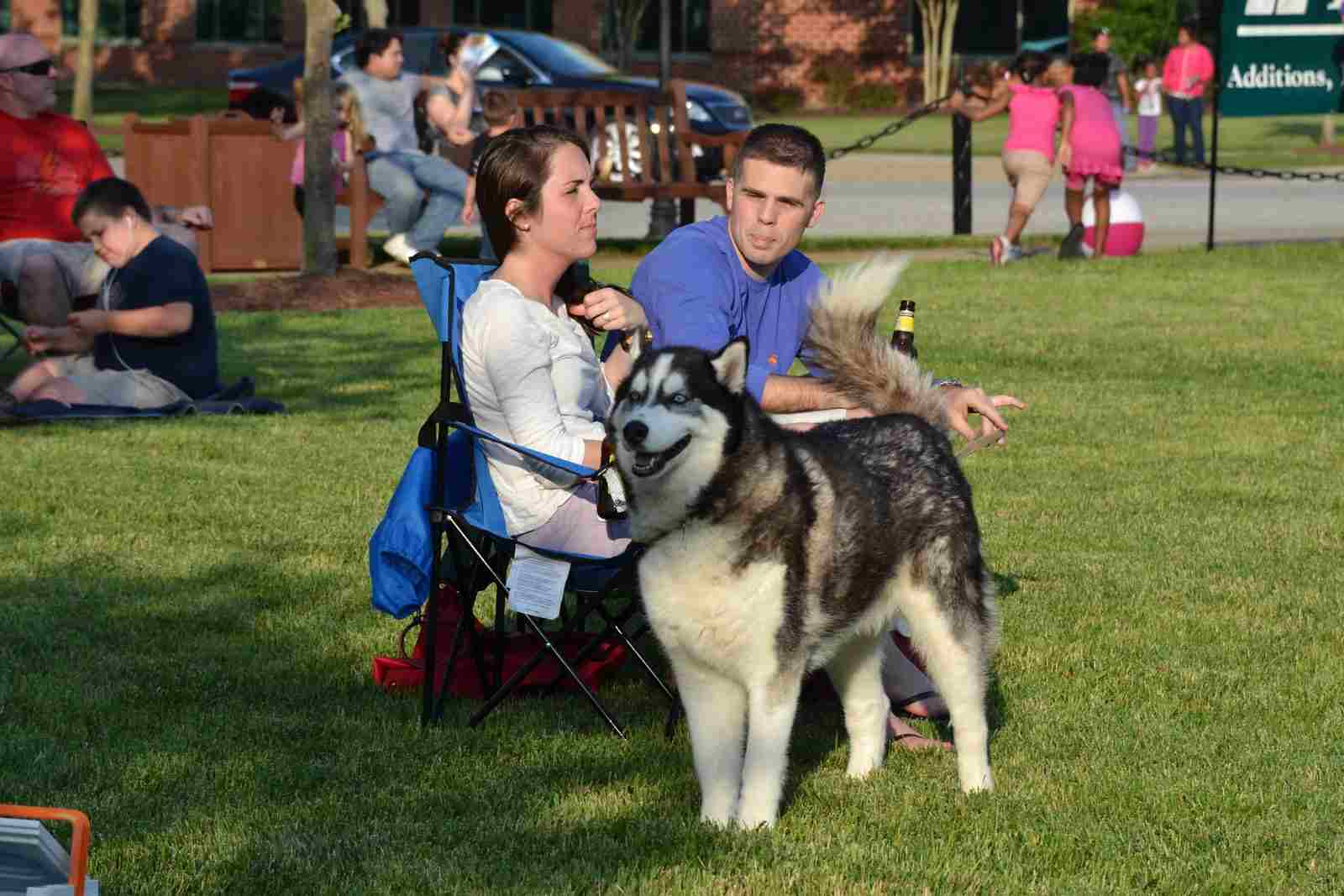
Possum:
Generally cautious and may display defensive behaviors if threatened.
Ecological Implications: Interactions with humans can impact possum behavior, affecting their survival and adaptation in urban environments.
Dog:
Behavior varies; domestic dogs may exhibit friendly, protective, or fearful responses based on training and socialization.
Ecological Implications: Human-dog interactions influence the role of dogs in human societies and ecosystems.
22. Danger Posed to Humans
Possum:
Generally poses minimal danger to humans; may scratch or bite if cornered but not considered a significant threat.
Ecological Implications: Limited danger to humans contributes to coexistence in shared environments.
Dog:
Potential danger depending on factors like aggression, training, and individual temperament; bites, especially from larger breeds, can cause harm.
Ecological Implications: Dogs’ danger to humans affects their role in society, requiring responsible ownership to mitigate risks.
23. Associated Precautions
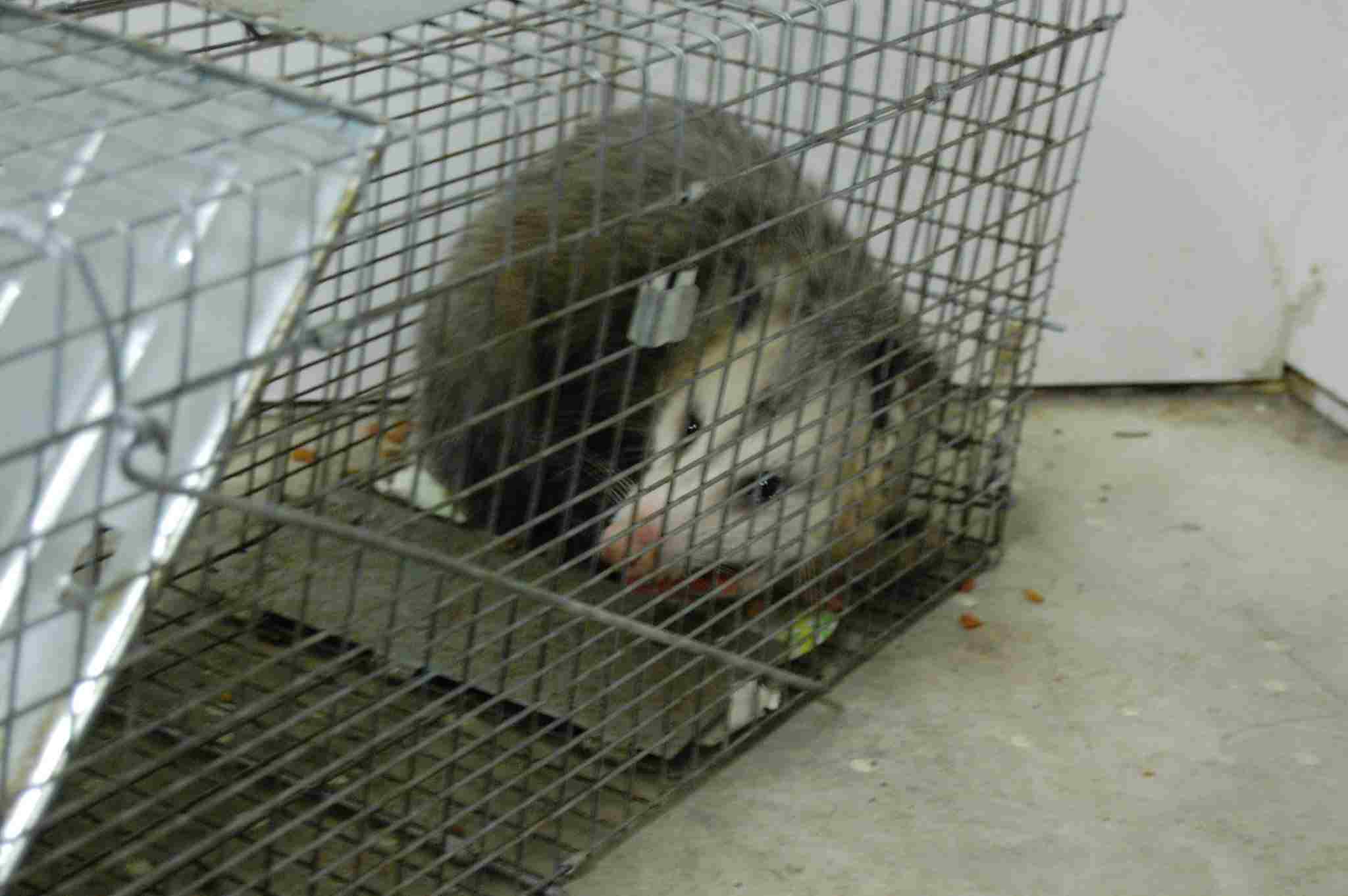
Possum:
Caution advised to avoid direct contact; may carry diseases like leptospirosis.
Ecological Implications: Awareness of potential disease transmission influences human-possum interactions.
Dog:
Responsible ownership practices, including training, leashing, and vaccinations, reduce risks of harm to humans and other animals.
Ecological Implications: Human precautions influence the impact of dogs on local ecosystems and wildlife.
24. Conservation Status
Possum:
Conservation status varies among species; some face threats due to habitat loss, while others are considered of least concern.
Ecological Implications: Conservation status reflects the broader impact of human activities on possum populations.
Dog:
Not assessed for conservation status as domesticated; wild relatives (e.g., wolves) may have conservation concerns.
Ecological Implications: Dogs’ ecological impact is more closely tied to human management and practices rather than conservation status.
Summary of Comparison
Taxonomy:
Possum: Order Diprotodontia, Family Phalangeridae, Genus Various, Species Multiple.
Dog: Order Carnivora, Family Canidae, Genus Canis, Species Canis lupus familiaris.
Appearance:
Possum: Dense fur, bushy tail, pointed snout, nocturnal adaptation.
Dog: Diverse coat types, varied sizes and shapes based on breeds.
Size:
Possum: Varies by species, e.g., Common Brushtail Possum 32–58 cm.
Dog: Varies widely by breed, from a few inches to over 2 feet.
Weight:
Possum: Common Brushtail Possum 1.2–4.5 kg.
Dog: Varies by breed, from a few kilograms to over 90 kg.
Bite Force (PSI):
Possum: Relatively low bite force adapted for chewing.
Dog: Varies by breed, German Shepherd around 238 psi.
Physical Offensive Advantages:
Possum: Limited, relies on agility and climbing.
Dog: Varied based on breed, includes biting, chasing, herding.
Physical Defensive Advantages:
Possum: Sharp claws, prehensile tail, nocturnal behavior.
Dog: Defensive mechanisms like barking, biting, posturing.
Speed:
Possum: Relatively slow ground movement, excellent climbing.
Dog: Varies by breed, some, like Greyhounds, can reach 45 mph.
Agility:
Possum: Highly agile, adapted for climbing.
Dog: Varies by breed, herding and working breeds often highly agile.
Senses:
Possum: Enhanced night vision, acute sense of smell, good hearing.
Dog: Varied senses across breeds, generally strong sense of smell, good hearing.
Overall Physical Capacity:
Possum: Tailored for climbing, moderate ground mobility.
Dog: Diverse physical capacities influenced by breed characteristics.
Habitat Preference(s):
Possum: Arboreal habitats, urban areas with trees.
Dog: Adaptable to diverse environments, from urban to rural settings.
Tracks:
Possum: Distinctive footprints with elongated fingers and toes.
Dog: Paw prints vary by breed, generally displaying claw marks.
Lifespan:
Possum: 6–15 years in the wild.
Dog: 10–15 years on average, varies by breed.
Mode of Feeding:
Possum: Primarily herbivorous, consumes leaves, fruits, insects.
Dog: Omnivorous, varied diets depending on breed and care.
Intelligence:
Possum: Moderate problem-solving skills.
Dog: Varies widely by breed, generally intelligent.
Social Behavior:
Possum: Mostly solitary, territorial behaviors.
Dog: Highly social, forms strong bonds with humans and other dogs.
Mode of Reproduction:
Possum: Marsupial reproduction with a short gestation.
Dog: Mammalian reproduction with longer gestation.
Parental Behavior:
Possum: Maternal care with pouch, limited paternal involvement.
Dog: Varied parental care based on domestication.
Proximity to Human-Inhabited Areas:
Possum: Often found in urban areas.
Dog: Closely associated with human habitats.
Behavior Toward Humans:
Possum: Generally cautious, defensive if threatened.
Dog: Behavior varies, influenced by training and socialization.
Danger Posed to Humans:
Possum: Minimal danger, may scratch or bite if cornered.
Dog: Potential danger, depends on factors like aggression and temperament.
Associated Precautions:
Possum: Caution advised to avoid direct contact.
Dog: Responsible ownership practices reduce risks of harm.
Conservation Status:
Possum: Varies among species, some face threats.
Dog: Not assessed as domesticated, wild relatives may have conservation concerns.
Conclusion
I). Similarities
Both possums and dogs exhibit adaptive behaviors based on their environments.
Human activities significantly influence the ecological roles of both species.
II). Differences
Possums are marsupials, while dogs are domesticated mammals.
Dogs have a broader range of sizes, appearances, and behaviors due to selective breeding.
The ecological implications of possums primarily involve their role in local ecosystems, while dogs have complex interactions with both human societies and the natural environment.
